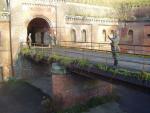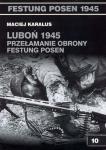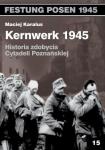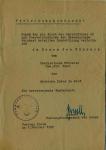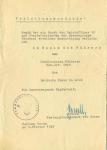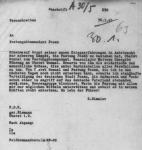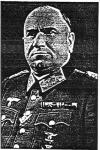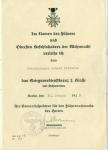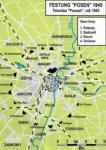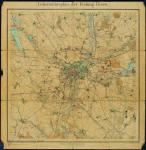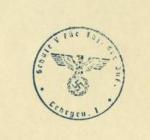-
Posts
654 -
Joined
-
Last visited
Content Type
Profiles
Forums
Blogs
Gallery
Events
Store
Everything posted by DDD777
-
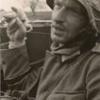
Heer DKiG Document
DDD777 replied to CTurk3's topic in Germany: Third Reich: Research, Documentation & Photographs
To be continued -

Heer DKiG Document
DDD777 replied to CTurk3's topic in Germany: Third Reich: Research, Documentation & Photographs
-

Heer DKiG Document
DDD777 replied to CTurk3's topic in Germany: Third Reich: Research, Documentation & Photographs
-

Heer DKiG Document
DDD777 replied to CTurk3's topic in Germany: Third Reich: Research, Documentation & Photographs
-

Heer DKiG Document
DDD777 replied to CTurk3's topic in Germany: Third Reich: Research, Documentation & Photographs
-

Heer DKiG Document
DDD777 replied to CTurk3's topic in Germany: Third Reich: Research, Documentation & Photographs
The prommissed pictures from Kamenetc Podolsky (Hube Kessel) Stalino line CCCP Bunkers. -

Heer DKiG Document
DDD777 replied to CTurk3's topic in Germany: Third Reich: Research, Documentation & Photographs
I mean that this dokument is fake. -

Heer DKiG Document
DDD777 replied to CTurk3's topic in Germany: Third Reich: Research, Documentation & Photographs
...without the stamp, BU is 90% fake -

Heer DKiG Document
DDD777 replied to CTurk3's topic in Germany: Third Reich: Research, Documentation & Photographs
Yes, thats Beer-party, transitional in Bear-party Ok, deal. -

Heer DKiG Document
DDD777 replied to CTurk3's topic in Germany: Third Reich: Research, Documentation & Photographs
Hi Naxos, Im traveling to Kamenetc Podolski on this weekend: 1 To enjoy the bearparty 2 To make a couple of pictures of the Hube Kessel. Another my DK hero from 20 PGD have a heavy fights in this pocket too. When the gentlemans are interested, i can post the presend time pictures of the Kessel on the next week. -

Heer DKiG Document
DDD777 replied to CTurk3's topic in Germany: Third Reich: Research, Documentation & Photographs
This is Leutnant Kurt Fuchs from III./Artillerie-Regiment 85 - Patzwall 126 page -

Heer Oberleutnant Roger Futterer
DDD777 replied to DDD777's topic in Germany: Third Reich: Research, Documentation & Photographs
-

Heer Oberleutnant Roger Futterer
DDD777 replied to DDD777's topic in Germany: Third Reich: Research, Documentation & Photographs
-

Heer Oberleutnant Roger Futterer
DDD777 replied to DDD777's topic in Germany: Third Reich: Research, Documentation & Photographs
-

Heer Oberleutnant Roger Futterer
DDD777 replied to DDD777's topic in Germany: Third Reich: Research, Documentation & Photographs
-

Heer Oberleutnant Roger Futterer
DDD777 replied to DDD777's topic in Germany: Third Reich: Research, Documentation & Photographs
Ernst Gonell: 10.06.1943 Kommandeur der Fahnenjunkerschule V, Posen 15.02.1945 Führerreserve OKH 17.02.1945 Kommandant der Festung Posen 23.02.1945 suicide before surrendering -

Heer Oberleutnant Roger Futterer
DDD777 replied to DDD777's topic in Germany: Third Reich: Research, Documentation & Photographs
-

Heer Oberleutnant Roger Futterer
DDD777 replied to DDD777's topic in Germany: Third Reich: Research, Documentation & Photographs
Generalmajor Ernst Mattern: 10.12.1944 - 20.01.1945 Führer Festungsaufbaustab Posen und Kommandant Posen 20.01.1945 - 17.02.1945 Festungsskommandant Posen und Kommandant Posen 23.02.1945 he surrended in the morning against Tschuikow after the suicide of Gonell -

Heer Oberleutnant Roger Futterer
DDD777 replied to DDD777's topic in Germany: Third Reich: Research, Documentation & Photographs
-

Heer Oberleutnant Roger Futterer
DDD777 replied to DDD777's topic in Germany: Third Reich: Research, Documentation & Photographs
AftermathThe Germans held out in Poznań for almost a month. Doubtlessly, their possession of the city complicated Soviet resupply efforts, but other influences had also convinced the Stavka to pause the Red Army advance at the Oder River instead of attempting to push on to Berlin in February 1945. The battle left over half (90% in the city center) of Poznań severely damaged by artillery fire and the effects of infantry combat in the city blocks. The battle definitively reduced the old Prussian fortress system which today stands mostly as monuments to an earlier military era. Finally, the outcome of the battle simplified Soviet resupply efforts between Warsaw and the Oder River. Over 5,000 German troops who fell in the battle are buried at Milostowo cemetery. The Soviets are estimated to have lost over 12,000 men by the battle's midpoint around 3 February 1945. Today, the Poznań Citadel site is a large park, in which are situated the remains of some of the fortifications, a memorial to the Red Army, military cemeteries, and a military museum containing exhibits relating to the 1945 battle. -

Heer Oberleutnant Roger Futterer
DDD777 replied to DDD777's topic in Germany: Third Reich: Research, Documentation & Photographs
The liberation of PoznańIn bitter combat that saw the outlying forts reduced and city blocks seized, the Soviets succeeded in pushing the German defenders towards the city center and the citadel. By the beginning of February 1945, most of the city had been liberated, and by 12 February, the Germans held only the imposing citadel. Generalmajor Gonell had previously believed that other German forces would attack and relieve his besieged forces, but by 15 February came to the realization that this was not going to happen. Incensed, he ordered his troops that were east of the Warta River to attempt to break out, and some 2,000 German troops managed to infiltrate through Red Army lines and head west on the following night. Arrayed against the citadel was the 29th Guards Rifle Corps, with the 27th Guards Rifle Division on the north, the 82nd Guards Rifle Division on the southwest, and the 74th Guards Rifle Division on the southeast. The final Soviet assault on the citadel started on 18 February. Before the Red Army troops lay a deep ditch matched by a steep rampart on the far side. In an odd echo of medieval warfare, the Soviet forces used ladders to cross this obstacle, but found themselves swept by fire from the citadel's redoubts. These redoubts took the better part of three days to neutralize; one silenced by flamethrowers and explosives, the other's line of fire blocked by debris thrown in front of the firing ports by exasperated Soviet troops. Having built an assault bridge, Red Army tanks and assault guns crossed into the main grounds of the citadel early on 22 February, commencing the final struggle for the old fortress. At this point, Generalmajor Gonell gave his troops permission to attempt to escape, but it was too late. Gonell refused to be captured and committed suicide by lying down on a flag and shooting himself in the head. That evening, Generalmajor Mattern, once again in charge of the German forces, surrendered the remaining 12,000 German troops to General Chuikov. -

Heer Oberleutnant Roger Futterer
DDD777 replied to DDD777's topic in Germany: Third Reich: Research, Documentation & Photographs
The city encircledPoznań lay on the main route between Warsaw and Berlin, and in German hands, was a serious obstacle to Soviet resupply efforts between Poznań and Berlin. Thus, the Red Army would have to clear the city of German troops before the final assaults designed to capture Berlin and end the war could begin. On 21 January 1945 the Soviet 1st Guards Tank Army forced a crossing of the Warta River north of the city, but by 24 January these bridgeheads had been abandoned in favor of better bridgeheads south of Poznań. Meanwhile, Red Army tank units had swept north and south of the city, capturing hundreds of German aircraft in the process. Moving further west, the Soviet tank units left the capture of the city to other Red Army forces. By 25 January, the Soviet 8th Guards Army had arrived and began a systematic reduction of the fortress. The following day, two of Poznań's forts in the south fell to a hasty assault conducted by the 27th and 74th Guards Rifle Divisions. This initial success allowed Chuikov's troops to penetrate the ring of forts and attack other forts from inside the city. On 28 January, the German high command relieved Generalmajor Ernst Mattern as the fortress commander and replaced him with a dedicated Nazi, Generalmajor Ernst Gonell. Gonell imposed draconian discipline on the German garrison. In some instances, German troops attempting to surrender were shot by their own side. Ultimately, the reduction of Festung Posen would consume the efforts of four divisions from Chuikov's army and two divisions of Colonel-General V. Ia. Kolpakchi's 69th Army. The 117th and 312th Rifle Divisions of the 91st Rifle Corps (69th Army) were deployed on the east side of the city. To the north, the 39th Guards Rifle Division of Chuikov's 28th Guards Rifle Corps, and to the south, Chuikov's 29th Guards Rifle Corps composed of the 27th, 74th, and 82nd Guards Rifle Divisions were arrayed against the Festung. By the southwestern suburb of Junikowo, the 11th Guards Tank Corps took up positions to block any German attempt at retreat. -

Heer Oberleutnant Roger Futterer
DDD777 replied to DDD777's topic in Germany: Third Reich: Research, Documentation & Photographs
Festung Posen BackgroundThe city of Poznań (called Posen in German) lay in the western part of Poland which had been annexed by Nazi Germany following their invasion of Poland in 1939, and was the chief city of Reichsgau Wartheland. By 1945, the Red Army advances on the Eastern Front had driven the Germans out of eastern Poland as far as the Vistula River. The Red Army launched the Vistula-Oder Offensive on 12 January 1945, inflicted a huge defeat on the defending German forces, and advanced rapidly into western Poland and eastern Germany. Certain cities which lay on the path of the Soviet advance were declared by Hitler to be Festungen (strongholds), where the garrisons were ordered to mount last-ditch stands. Hitler hoped the Festung cities could hold out behind Soviet lines and interfere with the movement of supplies and lines of communication. Poznań was declared a Festung in January 1945. The city was defended by 40,000 German troops from a great variety of units including Volkssturm, Luftwaffe ground forces, police, and highly motivated officer candidates.[1] Facing them would be experienced Guards Rifle troops of General V. I Chuikov's 8th Guards Army – the victors of Stalingrad. The defenders made use of some of the surviving Festung Posen fortifications that had been built during Prussian rule in the 19th century. The Fort Winiary citadel stood on a hill to the north of the city centre. Around the perimeter of the city were 18 massively-built forts, spaced at intervals of about 2 kilometres in a ring with a radius of about 5 kilometres. General Chuikov described the forts as . . . underground structures each with several storeys, the whole projecting above the surrounding terrain. Only a mound was visible above ground -- the layer of earth covering the rest. Each fort was ringed by a ditch ten metres wide and eight metres deep, with walls revetted with brickwork. Across the ditch was a bridge, leading to one of the upper storeys. Among the forts, to the rear, there were one-storey brick bunkers. These were clad in concrete almost a full metre thick, and were used as stores. The upper works of the forts were sufficiently strong to provide reliable protection against heavy artillery fire. . . . the enemy would be able to direct fire of all kinds against us both on the approaches to the forts and within them, on the rampart. The embrasures were such that flanking fire from rifles and machine-guns could be directed from them. -

Heer Oberleutnant Roger Futterer
DDD777 replied to DDD777's topic in Germany: Third Reich: Research, Documentation & Photographs
Standort Posen Die Stadt Posen an der Warthe heißt heute Poznan und liegt im westlichen Teil Polens. Die Stadt wurde am 11. September 1939 Teil des Militärbezirks Posen und am 26. Oktober 1939 dem Deutschen Reich angegliedert. Am 23. Februar 1945 wurde die Stadt von der Roten Armee nach schweren Kämpfen erobert. Fronttruppenteile Festungs-Infanterie-Abteilung 500 Festungs-MG-Bataillon 82 und 83 Standort-Bataillon z.b.V. Posen Division z.b.V. 429 verstärktes Infanterie-Bataillon Posen Alarm-Einheit Posen Kampfgruppe z.b.V. Posen Sonderführer-Einheit Posen Dolmetscher-Kompanie XXI Transport-Begleit-Regiment Posen Landesschützen-Bataillon 312 Landesschützen-Bataillon 475 Landesschützen-Bataillon 642 Landesschützen-Bataillon 814 Luftwaffen-Bau-Bataillon Posen Luftwaffen-Sanitäts-Abteilung Posen Luftwaffen-Sanitäts-Abteilung 3/I Luftwaffen-Sanitäts-Abteilung 5/VIII 1./Ergänzungs-Fernaufklärungs-Gruppe 2./Ergänzungs-Fernaufklärungs-Gruppe 3./Ergänzungs-Fernaufklärungs-Gruppe Ergänzungs-Gr.S. (L.L.)2 Flakgruppe Posen Flakuntergruppe Posen Heimat-Flak-Abteilung 25/I leichte Heimat-Flak-Batterie 1/II leichte Heimat-Flak-Batterie 12/I leichte Heimat-Flak-Batterie 17/I leichte Heimat-Flak-Batterie 23/I schwere Heimat-Flak-Batterie 203/I schwere Heimat-Flak-Batterie 209/I schwere Heimat-Flak-Batterie 210/I schwere Heimat-Flak-Batterie 211/I schwere Heimat-Flak-Batterie 213/I schwere Heimat-Flak-Batterie 216/I schwere Heimat-Flak-Batterie 230/I schwere Heimat-Flak-Batterie 234/I Ersatztruppenteile Infanterie-Ersatz-Regiment 33 Infanterie-Ersatz-Bataillon 104 Infanterie-Ersatz-Bataillon 110 Infanterie-Ersatz-Bataillon 115 Infanterie-Ersatz-Bataillon 169 Artillerie-Ersatz-Regiment 33 Artillerie-Ersatz-Regiment 168 Artillerie-Ersatz-Abteilung 33 Festungs-Pak-Ersatz-Abteilung 102 Artillerie-Ersatz-Abteilung 105 Artillerie-Ersatz-Abteilung 257 Panzer-Pionier-Bataillon Posen Pionier-Ersatz-Bataillon 33 Nachrichten-Ersatz-Abteilung 33 Kraftfahr-Park-Ersatz-Kompanie 21 Landesschützen-Ersatz- und Ausbildungs-Bataillon 21 Schule V für Fahnenjunker der Infanterie Luftwaffen-Jäger-Ersatz- u. Ausbildungs-Bataillon Posen Luftwaffen-Ersatz- u. Ausbildungs-Bataillon Posen Kraftfahr-Ausbildungs-Abteilung 2 der Luftwaffe Ersatz-Kompanie "Freikorps Danmark" Flieger-Ersatz-Bataillon I Kommandobehörden Festung Posen Unterstab I der Festung Posen Kommandant Festung Posen Militärbefehlshaber Posen stellv. Generalkommando XXI. A.K Wehrersatzinspektion (WK XXI. Zuständig für die Wehrbezirke Posen, Lissa, Hohensalza, Leslau, Kalisch und Litzmannstadt.) Wehrbezirkskommando (WK XXI, Wehrersatzbezirk Posen. Zuständig für die Wehrmeldebezirke (Wehrmeldeämter) Posen, Samter, Kolmar / W und Grätz.) Wehrmeldeamt (WK XXI, Wehrbezirk Posen. Zuständig für den Stadtkreis und den Landkreis Posen.) Kommandeur der Landesbautruppen 6 Landesschützen-Pionier-Oberbaustab VIII, Wehrmachts-Nachrichten-Kommandantur Posen Kommandeur der Kraftfahrparktruppen XXI Feldzeug-Kommando XXI Heeres-Zeugamt Posen Wehrkreisarzt XXI mit Sanitäts-Abteilung (Regiment) Kommandeur der Kriegsgefangenen XXI Kommandeur des Streifendienstes XXI Kommandeur (Brigade-Stab) Ost der Heeres-Unteroffiziers-Schulen der Infanterie Rüstungskommando Rüstungsinspektion XXI Wehrwirtschaftsoffizier XXI Flughafen-Bereichs-Kommando 3/I Kommando Flughafenbereich 5/VIII Fliegerhorst-Kommandantur 12/VIII Fliegerhorst-Kommandantur 13/I Luftgau-Kommando II Außenstelle des Luftgaues VIII Fluko Posen Einrichtungen Stalag XXI A Stalag XXI A/Z Stalag XXI D


